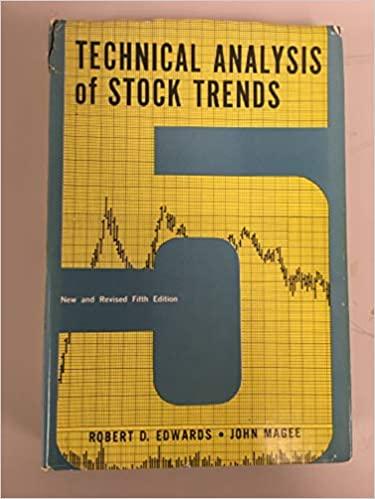Question
1) Huang Industries is considering a proposed project whose estimated NPV is $12 million. This estimate assumes that economic conditions will be average. However, the
1) Huang Industries is considering a proposed project whose estimated NPV is $12 million. This estimate assumes that economic conditions will be "average." However, the CFO realizes that conditions could be better or worse, so she performed a scenario analysis and obtained these results:
| Economic Scenario | Probability of Outcome | NPV |
| Recession | 0.05 | ($32 million) |
| Below average | 0.20 | (26 million) |
| Average | 0.50 | 12 million |
| Above average | 0.20 | 18 million |
| Boom | 0.05 | 30 million |
Calculate the project's expected NPV, standard deviation, and coefficient of variation. Round your answers to two decimal places. Enter your answers for the project's expected NPV and standard deviation in millions. For example, an answer of $13,000,000 should be entered as 13.
| E(NPV) | = $ million |
| NPV | = $ million |
| CV | = |
2) You must evaluate the purchase of a proposed spectrometer for the R&D department. The base price is $60,000, and it would cost another $9,000 to modify the equipment for special use by the firm. The equipment falls into the MACRS 3-year class and would be sold after 3 years for $27,000. The applicable depreciation rates are 33%, 45%, 15%, and 7%. The equipment would require a $10,000 increase in net operating working capital (spare parts inventory). The project would have no effect on revenues, but it should save the firm $34,000 per year in before-tax labor costs. The firm's marginal federal-plus-state tax rate is 40%.
What is the initial investment outlay for the spectrometer, that is, what is the Year 0 project cash flow? Round your answer to the nearest cent. Negative amount should be indicated by a minus sign.
$
What are the project's annual cash flows in Years 1, 2, and 3? Round your answers to the nearest cent.
In Year 1 $
In Year 2 $
In Year 3 $
3) You must evaluate a proposal to buy a new milling machine. The base price is $141,000, and shipping and installation costs would add another $8,000. The machine falls into the MACRS 3-year class, and it would be sold after 3 years for $70,500. The applicable depreciation rates are 33%, 45%, 15%, and 7%. The machine would require a $4,500 increase in net operating working capital (increased inventory less increased accounts payable). There would be no effect on revenues, but pretax labor costs would decline by $60,000 per year. The marginal tax rate is 35%, and the WACC is 12%. Also, the firm spent $5,000 last year investigating the feasibility of using the machine.
What are the project's annual cash flows during Years 1, 2, and 3? Round your answer to the nearest cent. Do not round your intermediate calculations.
Year 1 $
Year 2 $
Year 3 $
Step by Step Solution
There are 3 Steps involved in it
Step: 1

Get Instant Access to Expert-Tailored Solutions
See step-by-step solutions with expert insights and AI powered tools for academic success
Step: 2

Step: 3

Ace Your Homework with AI
Get the answers you need in no time with our AI-driven, step-by-step assistance
Get Started


